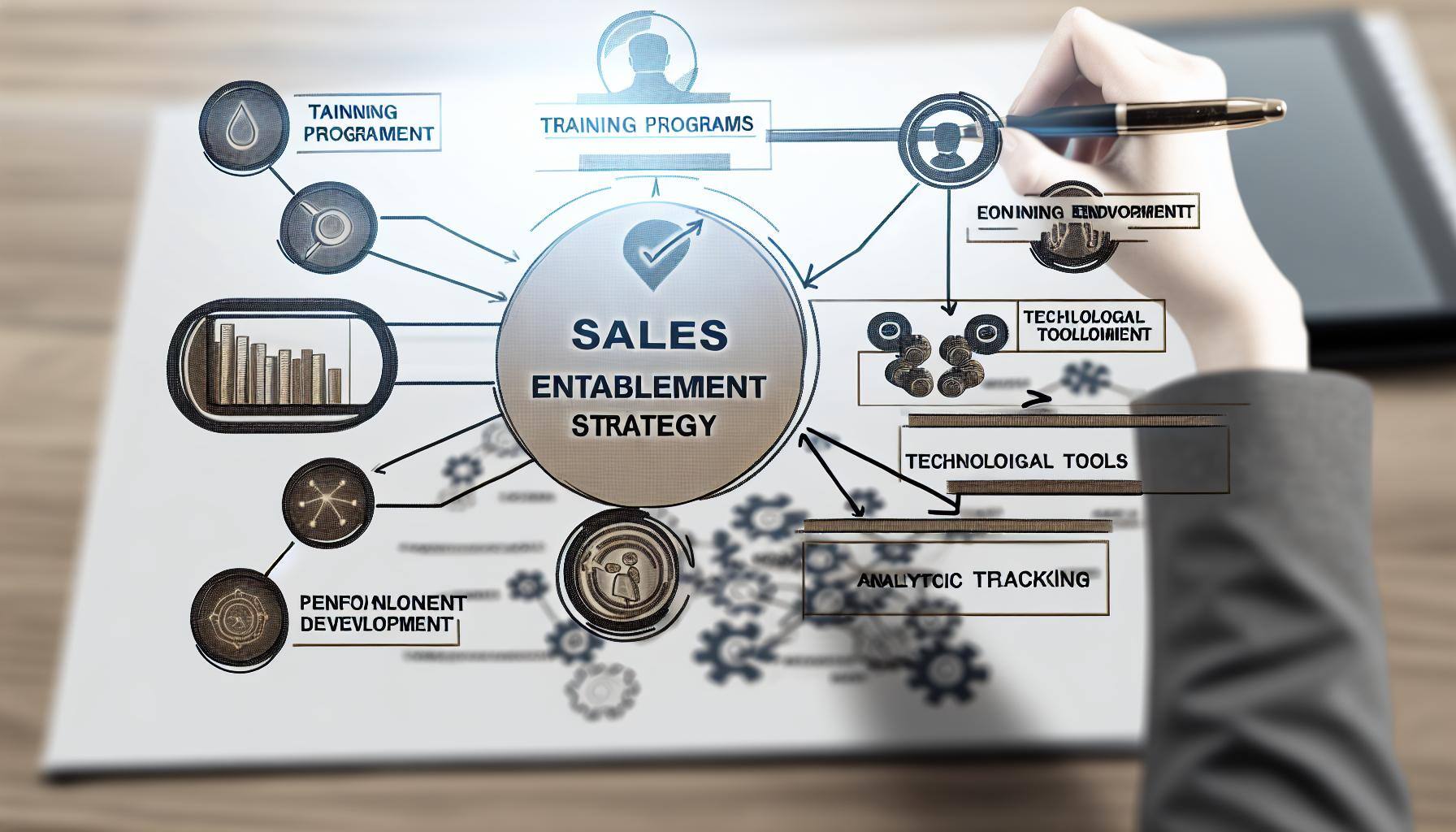Mastering Sales Enablement: A Must-Read Article

In this blog post, we will delve into the key strategies and best practices for mastering sales enablement, providing valuable insights for sales professionals and organisations looking to enhance their sales effectiveness.
Understanding Sales Enablement
Sales enablement is the process of providing sales teams with the resources, tools, and information they need to effectively engage with prospects and close deals.
It involves aligning marketing and sales efforts to ensure that the right content and messaging is delivered at each stage of the buyer's journey.
Understanding sales enablement is crucial for sales professionals and organizations as it helps them improve sales productivity and drive revenue growth.
Key Components of a Successful Sales Enablement Strategy
A successful sales enablement strategy consists of several key components:
- Content: Creating and curating high-quality, relevant content that addresses the needs and pain points of the target audience.
- Training: Providing comprehensive training programs to equip sales teams with the knowledge and skills needed to effectively sell the product or service.
- Technology: Implementing sales enablement tools and technologies that automate and streamline sales processes, such as CRM systems and sales enablement platforms.
- Alignment: Ensuring alignment between marketing and sales teams to enable seamless communication and collaboration.
By focusing on these key components, organizations can develop a robust sales enablement strategy that drives success.
Implementing Sales Enablement Tools and Technologies
Implementing sales enablement tools and technologies can greatly enhance the effectiveness and efficiency of sales teams.
Some commonly used sales enablement tools include:
- CRM systems: Customer Relationship Management (CRM) systems help sales teams manage customer data, track interactions, and streamline sales processes.
- Sales enablement platforms: These platforms provide a centralized hub for sales content, training materials, and analytics, making it easier for sales teams to access and utilize these resources.
- Communication tools: Tools like email, chat, and video conferencing platforms enable sales teams to communicate with prospects and clients effectively.
By implementing these tools and technologies, organizations can empower their sales teams and drive better results.
Measuring the Impact of Sales Enablement
Measuring the impact of sales enablement is essential to determine the effectiveness of the strategies and tactics being employed.
Some key metrics to consider when measuring the impact of sales enablement include:
- Revenue generated: Tracking the revenue generated by the sales team can provide insights into the overall impact of sales enablement efforts.
- Conversion rates: Monitoring the conversion rates at each stage of the sales funnel can help identify areas for improvement and optimization.
- Content engagement: Analyzing how prospects and clients engage with sales content can provide insights into its effectiveness and relevance.
- Sales team performance: Evaluating the performance of individual sales team members can help identify training and coaching needs.
By measuring these metrics, organizations can continuously improve their sales enablement strategies and drive better outcomes.
Continuous Improvement in Sales Enablement
Sales enablement is not a one-time effort, but an ongoing process that requires continuous improvement.
To achieve continuous improvement in sales enablement, organizations can:
- Gather feedback: Regularly seek feedback from sales teams, prospects, and clients to identify areas for improvement and address any pain points.
- Analyze data: Analyze sales performance data, content engagement metrics, and customer feedback to identify trends and make data-driven decisions.
- Provide ongoing training: Offer continuous training and development opportunities to sales teams to keep them updated on industry trends and best practices.
- Adapt to market changes: Stay agile and adapt sales enablement strategies to align with changing market dynamics and customer needs.
By embracing continuous improvement, organizations can stay ahead of the competition and drive sustainable sales growth.
Article Summary
In this blog post, we explored the key strategies and best practices for mastering sales enablement.
We discussed the importance of understanding sales enablement and its impact on sales productivity and revenue growth.
We also delved into the key components of a successful sales enablement strategy, including content, training, technology, and alignment.
Additionally, we highlighted the benefits of implementing sales enablement tools and technologies and provided insights on measuring the impact of sales enablement.
Finally, we emphasized the significance of continuous improvement in sales enablement and outlined strategies for achieving ongoing success.
By implementing these strategies and best practices, sales professionals and organizations can enhance their sales effectiveness and drive better results.


